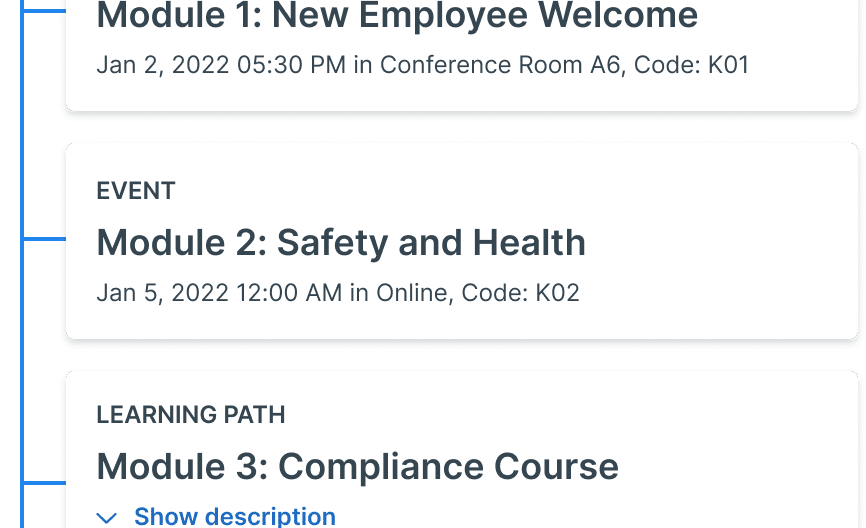A key job for any training team is addressing skill shortages by closing skills gaps among employees. In this blog post, we’ll discuss some of the ways that you can use learning paths to help improve your training offerings and close those skills gaps as they are identified.
If you’ve conducted a training needs analysis, identified skills gaps, and want to resolve them, a learning path can be a great tool for helping to close those gaps by easily ordering and delivering training courses to learners.
Easily Assign and Deliver Existing Training
After completing a training needs analysis, you should have a clear idea of the skills your staff has, and the skills they are missing. Armed with that knowledge, you can decide on a training strategy that will develop those missing skills for your staff.
Using learning paths, you can assign a series of training courses you have already stored within Administrate to employees within a specific department, or you can closely tailor your strategy down to setting different learning objectives for individual roles and employees. With a learning path, you can target training with whatever level of granularity you need.
All that’s needed is a simple click to add new objectives to a learning path, and you will be able to search from and add any courses you have already set up within Administrate. You can also add external content, such as links and documents, if you want to include training materials outside of Administrate.
Arrange Training Based on Priorities
As you work to address a skills gap on your team, you may want to prioritize certain skills over others. While everything you identified as a skills gap should be important to your business, some issues are more critical than others.
Learning paths allow you to ensure that learners are presented with courses in a particular order, all targeting a shared learning objective, so you can ensure high-priority training is completed first. And since you can tailor them to individual departments or employees, you can ensure that each employee is being prioritized for the training most critical to their role.
Group Training Courses to Align Skill Development
Sometimes, as part of closing a skills gap, employees will have to complete several training courses. Ensuring that they complete all of this training together, and making it clear that the courses’ combined effect is greater than the sum of their parts, is key to developing well-rounded skill sets.
Learning paths can be part of the solution. They can be nested, so that the training courses inside can be grouped together. For example, if you have a learning path for sales training, you might include that path as a sub-path for a sales management learning path. This reduces duplicate work, and makes adding whole groups of related training courses to an employee’s training assignments easy.
Manage Learner Data and Track Skill Development
Tracking training and skill acquisition on your team can be difficult, but it doesn’t have to be with Administrate’s platform. Both the Training team and your learners can log into Administrate and view their progress along their learning paths, with clear displays showing when students have passed assessments and completed courses.
This makes it easy to see at a glance where your learners are and what training they have completed towards learning a particular skill. An internal Training program will also be able to get an overview of all students assigned to a specific learning path, and see their progress, giving you an overhead view of where entire departments or organizations stand on completing their training with a click of a button.
Interested in seeing what other Administrate features could improve your team’s workflow and improve the quality of your training? Contact us, and get a demonstration of Administrate’s powerful functionality, such as our built-in LMS, our comprehensive reporting engine, and much more.





